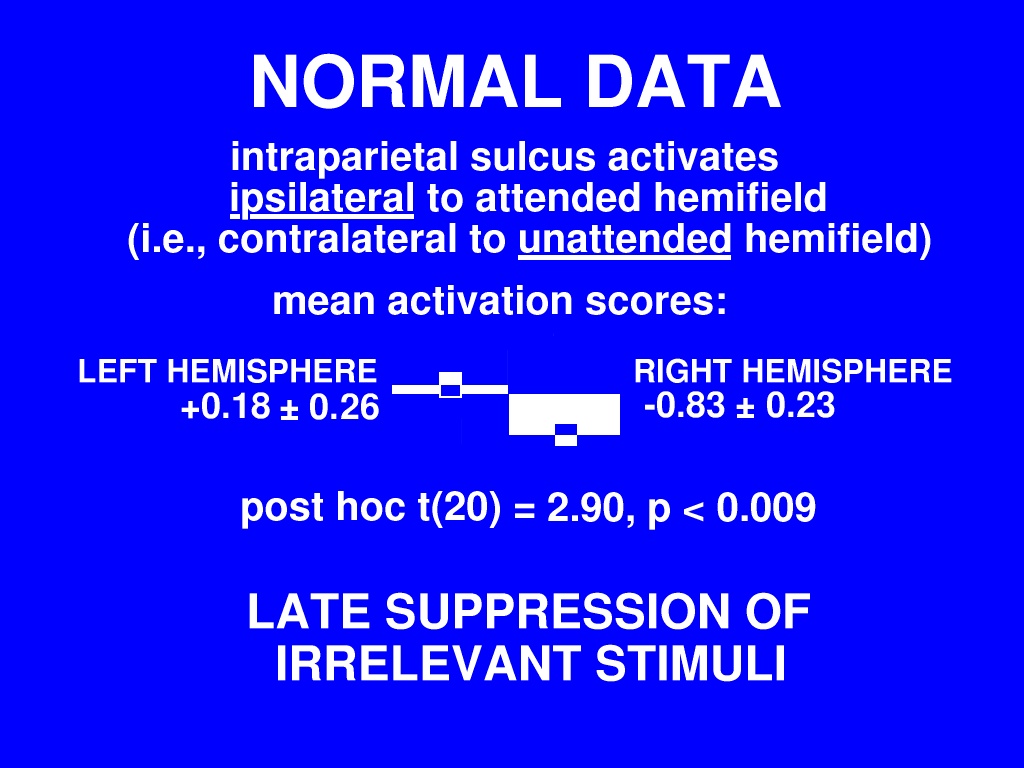 The normal data for intraparietal sulcus are rather interesting: they
show an activation ipsilateral to the attended hemifield, or
contralateral to the unattended hemifield. In line with a
couple of recent studies which have found that intraparietal sulcus
activity varies as a function of the irrelevant information in the
stimulus, we suggest that intraparietal sulcus is involved in active
suppression of irrelevant stimuli.
The normal data for intraparietal sulcus are rather interesting: they
show an activation ipsilateral to the attended hemifield, or
contralateral to the unattended hemifield. In line with a
couple of recent studies which have found that intraparietal sulcus
activity varies as a function of the irrelevant information in the
stimulus, we suggest that intraparietal sulcus is involved in active
suppression of irrelevant stimuli.
In our paradigm, in which subjects are constantly anticipating another
shift and attention therefore may not settle fully on one hemifield or
the other, this process of late attentional suppression may act in a
complementary role to early attentional selection: any input from the
unattended field that manages to squeak through the early attentional
gate is actively suppressed at this later stage.
`fMRI Evidence for Generalised Arousal as a Substitute for Early Selection in Autism during Conditions of Shifting Visual Spatial Attention', Matthew Belmonte, 10 November 2001


![[previous]](../left_arrow.gif)
![[contents]](../up_arrow.gif)
![[next]](../right_arrow.gif)